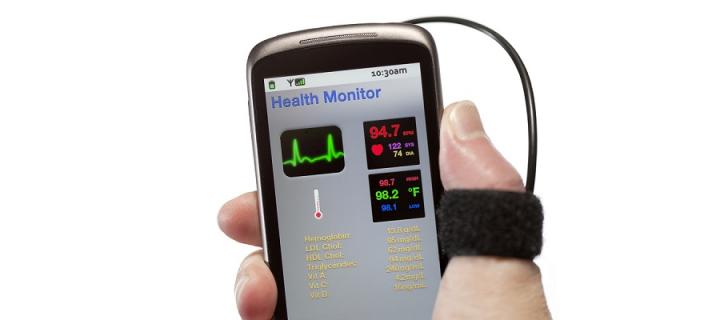COPD respiratory rate
Monitoring respiratory rate in COPD to detect early deterioration leading to hospital admission.
Background
Chronic Obstructive Pulmonary Disease (COPD) is a major cause of hospitalisation. Early detection of worsening of symptoms (exacerbations) may allow timely treatment and help people stay out of hospital.
Telemonitoring is a system where people record their symptoms and take physiological measures at home. The measurements are automatically transmitted to their clinician who can advise the patient or change treatment.
However, telemonitoring systems based on symptoms, oxygen levels and pulse rate have been disappointing in terms of reliably detecting exacerbations and improving outcomes. Breathlessness is a sign of worsening of COPD.
In this study we wished to find out if monitoring respiratory rate is potentially useful in detecting early deterioration that could lead to a hospital admission.

Method
The current ‘gold standard’ method for measuring respiratory rate is very cumbersome for patients to use.
We compared five newly available respiratory rate monitors with the current method in 20 people with different degrees of COPD to find out how accurate they were.
We then asked patients to wear the two most accurate ones in their home for two weeks to find out how their respiratory rate varied when they were resting and how it related to their oxygen levels, pulse rate and symptoms of breathlessness.
We then asked people who had an exacerbation (worsening) of COPD to use the better of these devices to measure their resting respiratory rate to see if we could detect a gradual improvement as they got better.
We hoped that this might indicate the possiblity that in future we could detect a rise in respiratory rate in people who were becoming more ill.
In addition, we interviewed patients and clinicians about their experience of using the devices.
Results
This study showed that it was possible to measure respiratory rate reasonably accurately in people at home who had COPD.
We explored how respiratory rate varied as people recovered from an exacerbation of COPD. While on average respiratory rate fell as people recovered from exacerbations, individual variation made it difficult to see a clear signal when individual patients moved from a period of exacerbation to recovery.
We concluded that it may be difficult to use respiratory rate alone as an early indicator of deterioration in COPD, but that it may be useful in combination with other symptoms and physiological signs and that further research should explore this.
Papers
Home monitoring of breathing rate in people with chronic obstructive pulmonary disease: observational study of feasibility, acceptability, and change after exacerbation (International Journal of Chronic Obstructive Pulmonary Disease, 2017)
Validation of five non-invasive respiratory rate monitors in patients with COPD in a laboratory setting (European Respiratory Journal, 2015)
| Funder | Chief Scientist Office |
| Chief Investigator | Prof Brian McKinstry |
| Co-applicants | Dr Janet Hanley, Prof Bill MacNee, Prof Hilary Pinnock, Dr Roberto Rabinovich, Dr Chris Weir |
| Study researchers | Noah Rubio, Ellen Drost |


